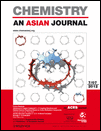
Chemistry-An Asian Journal
Scope & Guideline
Highlighting the Impact of Chemistry in Asia and Beyond.
Introduction
Aims and Scopes
- Materials Chemistry:
The journal frequently publishes research on the synthesis, characterization, and application of novel materials, including nanomaterials, polymers, and composites, with a focus on their functional properties and potential applications in energy, electronics, and biomedicine. - Catalysis and Reaction Mechanisms:
A significant portion of the articles focuses on catalytic processes, including the development of new catalysts, mechanistic studies, and applications in organic transformations, emphasizing sustainability and efficiency. - Electrochemistry and Energy Storage:
The journal covers advancements in electrochemical systems, including batteries, supercapacitors, and fuel cells, highlighting innovative materials and designs that enhance energy storage and conversion. - Sensing and Biosensing Technologies:
Research on the development of chemical sensors for environmental monitoring, disease diagnosis, and food safety is a prominent theme, showcasing novel sensing mechanisms and materials. - Biomolecular Chemistry:
The journal features studies on biomolecules, including their synthesis, modification, and application in therapeutic and diagnostic contexts, emphasizing the intersection of chemistry and biology. - Green Chemistry and Sustainability:
The journal encourages research that promotes environmentally friendly practices in chemistry, including the development of sustainable methods for chemical synthesis and waste reduction.
Trending and Emerging
- Sustainable Chemistry and Green Approaches:
There is an increasing emphasis on sustainable practices, including the development of green synthesis methods, materials recycling, and the use of renewable resources, aligning with global sustainability goals. - Nanotechnology and Nanomaterials:
Research on nanomaterials, including their synthesis, characterization, and applications in catalysis, drug delivery, and electronics, is rapidly growing, highlighting the significance of nanoscale phenomena in chemistry. - Artificial Intelligence and Machine Learning in Chemistry:
The integration of AI and machine learning techniques for predicting chemical behaviors, optimizing reactions, and designing new materials is emerging as a vital area of research, showcasing the intersection of computational and experimental chemistry. - Biomedical Applications of Chemical Compounds:
There is a noticeable trend towards exploring the biomedical applications of chemical compounds, including drug design, delivery systems, and diagnostic tools, reflecting the growing need for innovative healthcare solutions. - Electrocatalysis and Energy Conversion:
Research in electrocatalysis, particularly in the context of energy conversion and storage technologies, is gaining momentum, focusing on efficient methods for CO2 reduction and hydrogen production. - Photocatalysis and Solar Energy Utilization:
The utilization of photocatalysis for environmental remediation and energy production through solar-driven processes is on the rise, reflecting the increasing interest in harnessing renewable energy.
Declining or Waning
- Traditional Organic Synthesis:
While organic synthesis remains a core area, the focus on traditional methods without innovative modifications or applications is diminishing as researchers seek more efficient and sustainable alternatives. - Homogeneous Catalysis without Novel Approaches:
Research that presents homogeneous catalysis with established methods and without significant advancements or novel insights has seen reduced publication frequency, as the field increasingly values innovative and transformative approaches. - Inorganic Chemistry with Limited Applications:
Studies in inorganic chemistry that do not explore practical applications or interdisciplinary connections are becoming less prominent, as the journal prioritizes research with clear relevance to real-world problems. - Classical Coordination Chemistry:
The publication of classical coordination chemistry studies, particularly those lacking novel findings or applications, is declining, reflecting a shift towards more dynamic and application-driven research. - Theoretical Studies with Limited Experimental Validation:
Theoretical studies that do not include strong experimental validation or practical implications are facing reduced interest, as the journal seeks to publish work that bridges theoretical insights with experimental findings.
Similar Journals
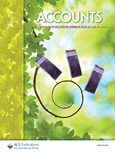
ACCOUNTS OF CHEMICAL RESEARCH
Pioneering Insights for a Healthier TomorrowACCOUNTS OF CHEMICAL RESEARCH, published by the American Chemical Society, is a premier journal dedicated to advancing the field of chemistry and its applications in medicine. With an impressive impact factor and recognition as a Q1 journal in both chemistry and medicine categories, it ranks among the top-tier publications, exhibiting an outstanding Scopus rank of 8 out of 408 in general chemistry, placing it in the 98th percentile. This journal has been a vital source of innovative and significant research since its inception in 1968, and it aims to provide a platform for high-quality research articles, reviews, and critical essays that bridge the gap between chemical research and clinical implications. While it is not an open-access publication, the insights available in Accounts of Chemical Research are invaluable for researchers, professionals, and students seeking to explore the latest developments and interdisciplinary approaches within the dynamic fields of chemistry and medicine.

Eurasian Journal of Chemistry
Advancing Global Chemistry ResearchEurasian Journal of Chemistry is an emerging open-access journal published by KARAGANDA STATE UNIVERSITY in Kazakhstan. With a focus on the diverse and dynamic field of chemistry, this journal aims to disseminate cutting-edge research and innovative findings from various branches of chemistry, engaging a global audience of researchers, professionals, and students. Despite its recent inception in 2023, the journal is strategically positioned within the field, currently ranked in the fourth quartile of Scopus for General Chemistry, indicating its potential for growth and contribution to the scientific community. The ISSN of the journal is 2959-0663 with an electronic counterpart of 2959-0671, ensuring wide accessibility to its rich content. With an open-access model, the Eurasian Journal of Chemistry promotes the sharing of knowledge and advances in research to foster collaboration and inspiration across the globe.
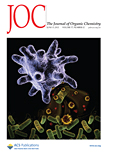
JOURNAL OF ORGANIC CHEMISTRY
Driving Progress in the World of Organic ChemistryJournal of Organic Chemistry, published by the American Chemical Society, is a prestigious peer-reviewed journal dedicated to advancing the field of organic chemistry. With an ISSN of 0022-3263 and an E-ISSN of 1520-6904, this journal has established itself as a key platform for disseminating high-quality research since its inception in 1936. Residing in the Q2 category for Organic Chemistry as of 2023, it ranks #64 out of 211 in Scopus, positioning itself within the top 69th percentile of its field. Researchers and professionals can access vital findings and innovative methodologies that drive the understanding and application of organic chemical principles. Although the journal is not open access, it remains a crucial resource in academia and industry, contributing significantly to the scientific community's knowledge base. For detailed insights and cutting-edge research, the journal continues to be an essential read for those engaged in the dynamic and evolving landscape of organic chemistry.
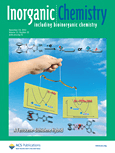
INORGANIC CHEMISTRY
Illuminating the Dynamics of Inorganic MaterialsInorganic Chemistry, published by the American Chemical Society, stands at the forefront of the field of inorganic and physical chemistry, boasting an impressive impact in the academic community with a 2023 classification in the Q1 quartile across multiple categories including Inorganic Chemistry and Miscellaneous Chemistry. Since its inception in 1962, this esteemed journal has been a crucial platform for disseminating groundbreaking research, innovative methodologies, and comprehensive reviews integral to understanding the complex behaviors of inorganic materials. With a ranking of #12 out of 79 in Inorganic Chemistry and #37 out of 189 in Physical and Theoretical Chemistry according to Scopus metrics, Inorganic Chemistry has established itself as a premier destination for researchers, professionals, and students alike, eager to stay abreast of pivotal developments and trends in the discipline. Despite being a subscription-based journal, its esteemed reputation and critical contributions make it essential for anyone engaged in the exploration of inorganic chemical phenomena. As it prepares to converge into a new era by 2024, the journal continues to embody excellence and innovation, fostering a dynamic exchange of ideas essential for advancing this vibrant area of science.
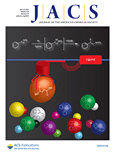
Journal of the American Chemical Society
Pioneering Research in Modern ChemistryJournal of the American Chemical Society (JACS), published by the American Chemical Society, stands as a pivotal publication in the field of chemistry, facilitating the dissemination of significant research findings since its inception in 1879. With an impressive impact factor and esteemed rankings placing it in the Q1 quartile across various categories—including Biochemistry, Catalysis, and Colloid and Surface Chemistry—JACS continues to serve as a vital resource for scientists, professionals, and students alike. Researchers choose JACS for its rigorous peer-review process, ensuring high-quality content that shapes the landscape of modern chemistry. The journal's extensive scope encompasses pivotal advancements and innovative methodologies, reflecting the evolving dynamics of chemical research. With access options being traditional subscription-based, it remains crucial for institutions and individuals to engage with its latest issues to stay at the forefront of chemical science advancement.

EUROPEAN JOURNAL OF ORGANIC CHEMISTRY
Catalyzing Knowledge in Organic and Physical ChemistryThe EUROPEAN JOURNAL OF ORGANIC CHEMISTRY (ISSN: 1434-193X; E-ISSN: 1099-0690), published by WILEY-V C H VERLAG GMBH in Germany, stands as a crucial platform for disseminating innovative research in the fields of organic, physical, and theoretical chemistry. With its inception dating back to 1998 and converging expertise until 2024, this esteemed journal has achieved a notable reputation, earning a Q2 rank in both Organic Chemistry and Physical and Theoretical Chemistry categories as of 2023, indicating its vital contribution to the academic community. Researchers and professionals will benefit from its rigorous peer-reviewed articles, which foster advancement in chemical sciences, while students can leverage its wealth of knowledge to enhance their learning. Although currently not an open-access journal, the content produced is invaluable for those looking to stay at the forefront of chemical research.

CHINESE JOURNAL OF CHEMISTRY
Shaping the future of chemistry with impactful research.The CHINESE JOURNAL OF CHEMISTRY, published by WILEY-V C H VERLAG GMBH, is a distinguished peer-reviewed journal that has been contributing to the field of chemistry since its inception in 1990. With an impressive Q1 ranking in the Chemistry (miscellaneous) category and a Scopus rank of 67 out of 408, this journal is recognized for its rigorous scholarly standards and significant impact within the academic community. Renowned for publishing high-quality research, reviews, and insightful commentaries, the journal serves as a vital resource for researchers, professionals, and students keen on advancing their understanding of general chemistry and its applications. Although it does not offer open access, the journal remains an essential outlet for innovative chemistry research, attracting contributions from a global network of specialists. With its broad scope covering various aspects of chemistry and a commitment to fostering scientific dialogue, the CHINESE JOURNAL OF CHEMISTRY is poised to continue its role as a central pillar in the ever-evolving landscape of chemical sciences.
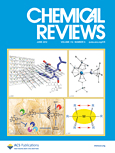
CHEMICAL REVIEWS
Illuminating the Pathways of Chemical Innovation.Chemical Reviews, published by the American Chemical Society, is a leading journal in the field of chemistry, renowned for its comprehensive and authoritative reviews on a wide range of chemical topics. With its ISSN 0009-2665 and E-ISSN 1520-6890, this prestigious journal has maintained a remarkable trajectory since its inception in 1924, continuously contributing to advancements in the chemical sciences. As a Q1 journal in the Chemistry (miscellaneous) category, it stands at the forefront of research, boasting an impressive Scopus rank of #1 out of 408 in the field of General Chemistry, positioning it within the top 1% of the field. Chemical Reviews offers invaluable insights and serves as a critical resource for researchers, professionals, and students alike, facilitating knowledge exchange and fostering innovation in chemistry. While currently not open access, it remains a vital component of the scientific community, gathering an extensive readership base eager for the latest developments, methodologies, and theoretical frameworks in this dynamic discipline.

CHEMPHYSCHEM
Fostering High-Impact Discoveries in Theoretical and Experimental ScienceCHEMPHYSCHEM, published by WILEY-V C H VERLAG GMBH in Germany, stands as a pivotal resource for researchers and professionals in the fields of Atomic and Molecular Physics, as well as Physical and Theoretical Chemistry. With a commendable impact across its converged years from 2000 to 2024, the journal is categorized in the second quartile (Q2) for both aforementioned fields according to the 2023 metrics, underscoring its significance in advancing scientific dialogue and research. CHEMPHYSCHEM is committed to disseminating high-quality, peer-reviewed research articles that delve into the intricate interplay between chemistry and physics, making it an essential read for students and experts alike. The journal does not currently offer open access options, allowing for focused scholarly discussions that cater to the academic community's needs. As reflected in its Scopus rankings, CHEMPHYSCHEM maintains respectable standings, ranking #84/224 and #90/189 in its respective categories, demonstrating its commitment to high-impact research and innovation.

ACS Organic & Inorganic Au
Advancing the Frontiers of ChemistryACS Organic & Inorganic Au, published by the American Chemical Society, stands as a premier open-access journal dedicated to advancing the fields of organic and inorganic chemistry. Since its inception in 2021, this journal has swiftly risen to prominence, achieving a commendable Q1 classification in Inorganic Chemistry, Organic Chemistry, and Physical and Theoretical Chemistry as of 2023. With an ISSN of 2694-247X, it provides a vital platform for researchers, professionals, and students to disseminate their findings and engage with cutting-edge work across converged disciplines. Operating from its headquarters in Washington, DC, ACS Organic & Inorganic Au is committed to fostering a collaborative research environment, encouraging rigorous peer review, and ensuring the wide accessibility of high-quality scholarly articles. With its open-access model, readers worldwide can freely access and utilize research findings, promoting a global exchange of knowledge crucial for driving innovation in chemistry.